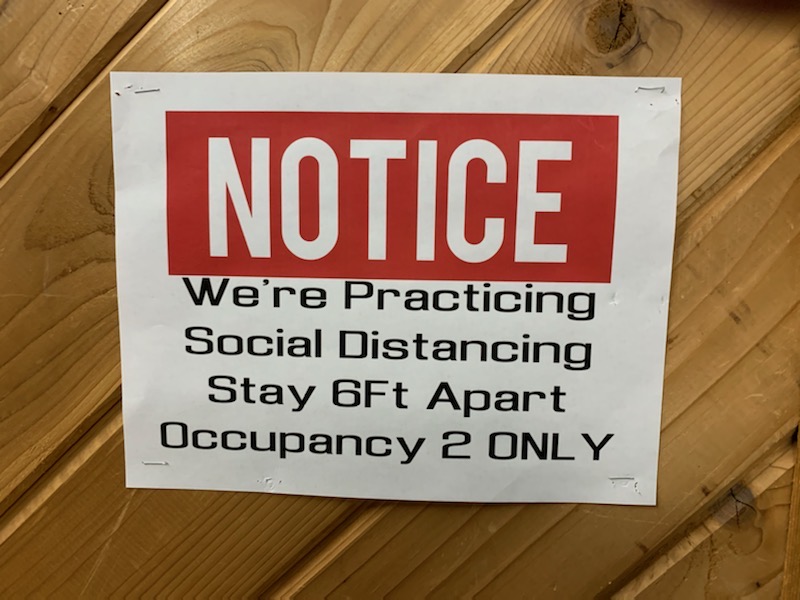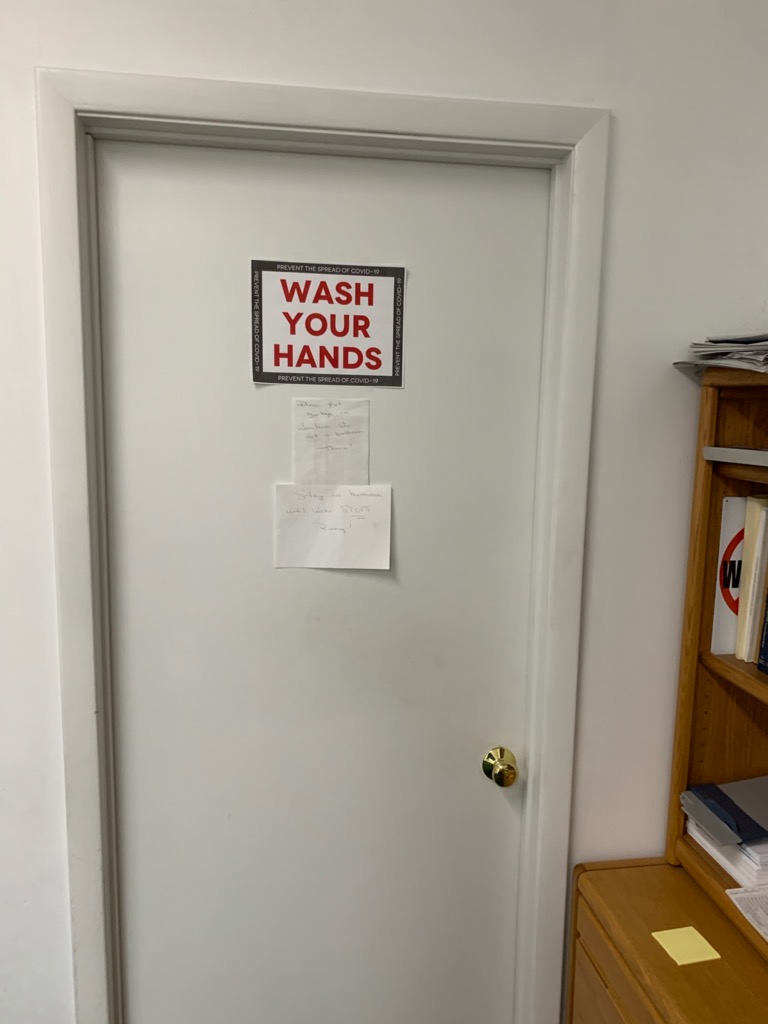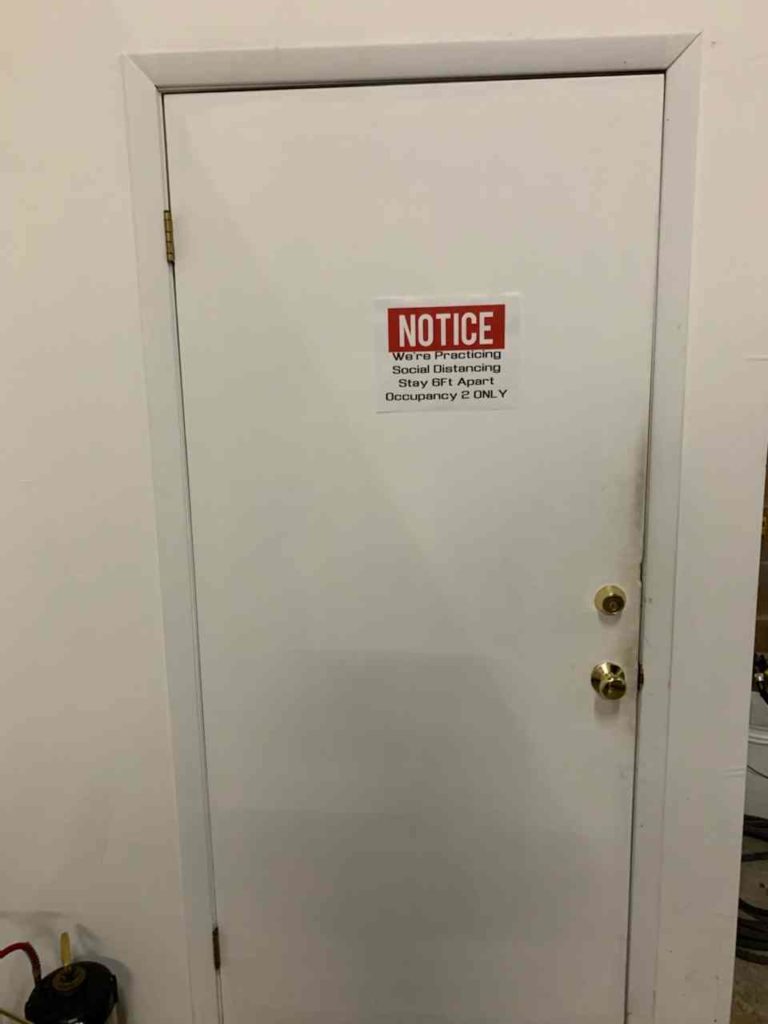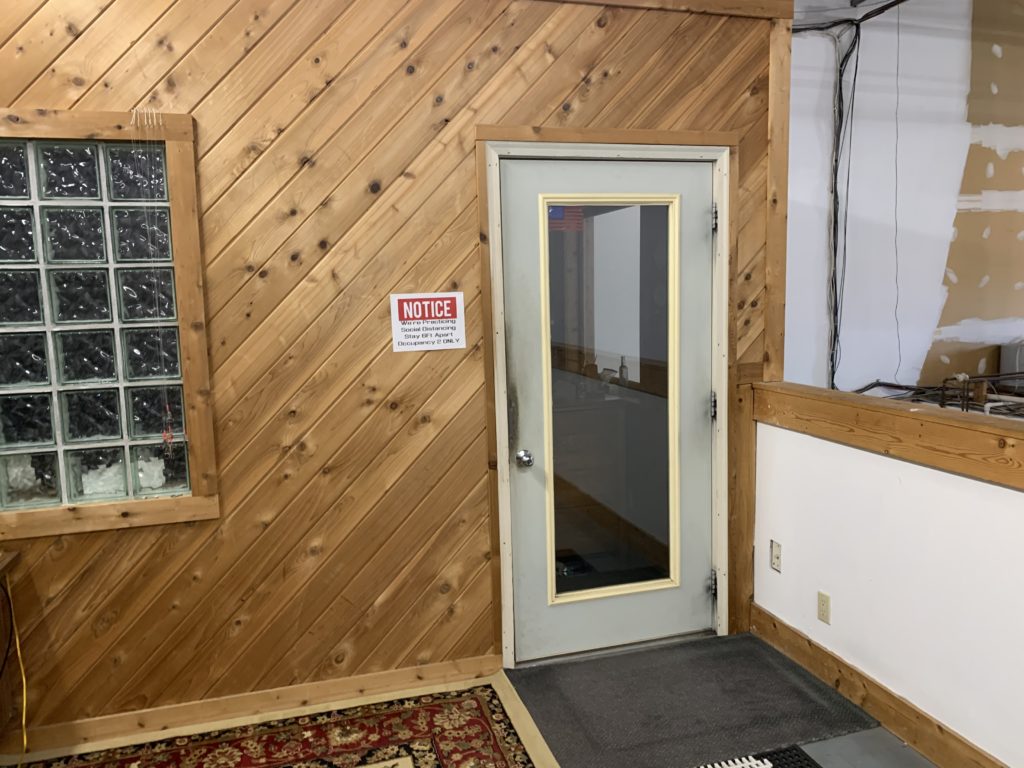

Don't let pest ruin your party.
If you are planning an event or entertaining outdoors this summer, consider ways of keeping pests off your guest list. In New Jersey, insects like gnats are at the top of most people's lists of annoyances for picnics and playtime, but others, like mosquitoes and ticks, can also quickly ruin outdoor fun.
Biting pests, such as gnats, mosquitoes, and ticks, feed on blood for survival and reproductive needs, making them the biggest offenders for outdoor fun. However, there is no need to suffer through this annoyance, and with some planning, a pest control company like Permakill Exterminating can control these pests for your event.
The last thing you want is for your guests to remember being attacked by mosquitoes at your party, and you also don't want to drench yourself in insect repellent or ask your guests to carry lit citronella candles.
Our team can visit your backyard or event location in advance to apply sprays to knock down the insect population and leave a barrier that keeps your guests comfortable and protected throughout the day or evening. This application dries within 30 minutes and provides long-lasting protection.
How About After the Party?
It's essential to understand that the treatments applied to your yard may only provide temporary relief because the mosquitoes and gnats can fly, and barriers only last 3 to 5 days.
It is easier to eliminate mosquitoes from your yard than prevent them from coming in. These miserable little pests that fly in from miles away can ruin your fun time with your friends and family.
The best way to maintain a nuisance-free yard is to combine monthly applications and preventive techniques. Additionally, the most effective preventative approach typically involves combining multiple tactics. When working together, these measures for ongoing mosquito prevention in your yard ensure it is ready whenever needed.
Consider the following long-term prevention measures for mosquitoes
By implementing these measures, you can enjoy your backyard and plan events without while minimizing the risk of unwanted pests. For special events spraying call Permakill Exterminating in Morris County NJ if you want to be sure your outdoor event has the best chance of being pest free.
Spiders are often considered beneficial insects as they help control other insect populations, but their presence can be unsettling. There are several reasons why you may have spiders; so lets review a few housekeeping concepts so we can both understand why spiders are present and how to mitigate their numbers in and around your home.
Now that we reviewed what attracts spiders lets review the steps to help keep them away.
Here are 6 natural methods to keep spiders out of your house:
1. White Vinegar: Create a vinegar spray by mixing equal parts vinegar and water. Spray it around your home, especially in the kitchen and entry points, as spiders are sensitive to the sour taste and odor of vinegar. Do not use vinegar on
2. Citrus: Spiders dislike citrus. Keep citrus fruits in a bowl on the counter and rub leftover citrus peels along windowsills and doorways. You can also soak orange peels in vinegar overnight and use the infused vinegar as a cleaning agent or spray.
3. Mint: Spiders hate mint. Spray peppermint essential oil mixed with water all over your home, or crush dried mint leaves and place them in sachets in your kitchen cupboard. Planting mint near entryways can also deter bugs from entering.
4. Diatomaceous Earth (DE): Sprinkle DE, a non-toxic powder made from fossilized algae, in areas where you notice spiders. It absorbs moisture from pests, causing them to dehydrate. You can also mix DE with water in a spray bottle and apply it around the outside of your home or in your garden.
5. Cedar: Use cedar blocks or chips sprinkled around your home to repel spiders and other bugs while adding a pleasant woody scent.
6. Horse Chestnuts: Place horse chestnuts on windowsills or along baseboards to drive spiders away. These nuts last a long time and can be an effective deterrent.
By implementing these ideas and using some of these natural methods you can make your home less inviting to spiders, greatly reduce their presence, and keep them outside where they belong.
When it comes to pest control, there isn't a product or a process that will remedy every situation. Do-it-yourself pest control products can work, but the solution should fit the problem, and you will need to consider the situation and assess the risks involved.
The thing to consider is the scale and type of the infestation. Let's look at a few typical situations. For our first example, if you notice a few errant ants in your kitchen, then a DIY plan of attack will probably do the trick. Plenty of methods for dealing with these types of problems include traps, store-bought pesticides, and homemade solutions. They should be effective if you follow the packaging or directions correctly.
Sometimes in this situation, the errant ants are really part of a colony behind your dishwasher or stove. This means that even if your DIY solution works today, you may still have a recurring pest issue on your hands. If you notice that the insects keep returning, there might be a bigger issue with many insects in your home, and it may be too late to implement a DIY solution. You might have to bring in a professional so that they can attack the problem at its source.
A second common scenario involves risk. For example, if a large wasp nest grows in your attic or walls or in the eaves of your house, you would likely want a professional with experience dealing with stinging insects. A similar situation might exist with wood-destroying insects like termites, and the risk of not eliminating them is likely too much for the casual "DIYer."
Lets Review the basics for DIY Pest Control Solutions:
Cost: Regarding cost, professional exterminators will have higher price tags than DIY hacks. One-time pest control services typically range from $300 to $600, while many DIY methods can be as low as $20 to $50. However, if your DIY attempts fail to address the infestation's root cause, you might spend more money on various solutions than you would have by simply calling in a professional. What can also happen is that the DIY solutions make the professional pest control efforts more difficult buy driving the insects deeper into your home where the sprays can't reach. It's worth considering this aspect before you embark on a DIY pest control project.
Convenience: DIY pest control can be as easy as purchasing a single product from your local store. Sometimes, you may not even need to leave your house, as many DIY hacks use everyday household items. Nevertheless, professional pest control also offers convenience. By entrusting the extermination to a professional, you will not have to deal with with having the right equipment, correctly using products, or running out of supplies.
Safety: DIY pest control products may contain harsh chemicals not commonly found in your home. Incorrect or excessive use of these products can pose a safety risk to yourself, your pets, your children, and other household members. Hiring a professional significantly reduces the chances of harming anyone's health or well-being.
Guarantee: Typically, pest control companies offer service guarantees, ensuring that they will return to your home and provide another service free of charge if your pest problem persists. DIY products may or may not come with a guarantee of effectiveness.
In summary:
As a good rule of thumb, you should be able to DIY your pest control if dealing with a few non-wood boring insects. On the other hand, if the pests carry a significant risk of injury or disease or could cause significant structural damage, then it is best to call in the experts.
Stink bugs are a type of flying insect known for their ability to emit a pungent odor when threatened or crushed, which is a defensive mechanism used to deter predators. They belong to the family Pentatomidae and are also known as shield bugs due to their distinctive shield-like shape.
One of the most well-known species is the Brown Marmorated Stink Bug (BMSB), an invasive species that was introduced to the United States from East Asia in the mid-1990s. Their indigenous habitat spans across China, Japan, Korea, and Taiwan. These bugs are also known by names such as the yellow-brown or the East Asian stink bug. Today, brown marmorated stink bugs are most prevalent in the mid-Atlanta region, but they have been identified in 44 states.
Stink bugs can become pests in agricultural areas because they feed on a wide range of crops, including fruits, vegetables, and grains, potentially causing significant damage. They can also become a nuisance in homes and other buildings where they may seek shelter during colder months. Their ability to fly adds to their mobility and capacity to spread.
What Do Stink Bugs Look Like?
Stink bugs are typically identified as "sizeable, oval-shaped insects" and "shield-shaped insects." Adult stink bugs can grow to almost 2 cm in length and are nearly as broad as they are lengthy. Their legs project from the sides, giving the adult stink bugs an even larger appearance. The brown marmorated stink bug has a brownish hue, marked by lighter bands on the antennae and darker bands on the wings.
Juvenile stink bugs, also known as nymphs, are extremely small when they emerge from their eggs. The brown marmorated stink bug nymphs exhibit yellow and red colors. As they mature, the yellow shade gradually transitions to white. During their nymph stage, they have bright red eyes. The nymphs go through molting or shedding their skin five times. Each molting phase results in the stink bug nymph growing larger. By the final molt, the nymphs approach the size of the adult stink bugs.
Adult stink bugs are typically large and oval-shaped, nearly as wide as long, with legs extending from their sides. Immature stink bugs, or nymphs, are smaller and their coloration can change as they mature.
What Attracts Stink Bugs in Your House?
When temperatures drop, stink bugs make their way indoors. So in our area, of New Jersey, they typically become a problem for homeowners in autumn. These insects are attracted to the warmth and shelter of your home and will enter through any cracks and openings.
Inside, stink bugs are found hiding in cracks and crevices, usually in and around baseboards, windows, and door trims. They're also common in lights and external exhaust fans. Stink bugs enter by congregating around warm, heat-reflective surfaces like windows and porches. Light also attracts stink bugs to your house. To prevent this, you should keep exterior lighting to a minimum and use blinds to reduce any light from inside the home from spilling out.
To keep these pests from coming inside, homeowners should seal openings with caulk to keep them out, and don't forget to check screens on windows and doors for holes as well!
What keeps stink bugs away?
Stink bugs are averse to certain essential oils and fragrances, making these ideal repellents. Despite being odoriferous insects, stink bugs do not appreciate the aromas that humans often find pleasant, and they tend to avoid clove oil, lemongrass oil, spearmint oil, and Ylang oil. Some other household items, like various dryer sheets, also produce smells that stink bugs find repulsive.
Regarding vegetation that deters stink bugs, interestingly, the more aromatic, the better. Plants such as lavender, garlic, and catnip are some of the most effective choices for warding off stink bugs from your dwelling. Position these plants near your house, and most insects will think twice before venturing your way.
How do I get rid of stink bugs?
As discussed, stink bugs are attached to the warmth of your home so the best approach would be to locate patching up small drafts and cracks in frames and baseboards.
Next, remove them without crushing them. Crushing them will release their odor, in turn attracting more stink bugs. Vacuum the up if they are in nunbers and wash the surfaces they congregated on with soapy water.
Checking for bed bugs when traveling is crucial to ensure a comfortable and pest-free stay. Bed bugs are small, parasitic insects that feed on human blood and are notorious for infesting beds and other furniture. Here's a detailed description of how to check for bed bugs when traveling:
Before you leave:
Research your accommodations and look for reviews or reports of bed bug infestations at your chosen accommodation. If there are multiple complaints, consider selecting another place to stay.
Pack essential items and bring a small flashlight, a magnifying glass, and a set of plastic bags to aid your inspection.
Upon arrival:
Store your luggage appropriately and avoid immediately placing your luggage on the bed or upholstered furniture. Instead, use a luggage rack (inspect it first) or put your bags in the bathroom or bathtub until you've completed the inspection.
Here are the common places where bed bugs are found:
Let's begin by visually inspecting the sleeping area and examining the headboard, mattress, box spring, and nearby furniture. Look out for small brown live bed bugs, molted exoskeletons, dark spots (fecal stains), or small bloodstains.
In active infestations, live bed bugs can usually be found crawling around the sleeping areas, while squashed dead bugs often leave red-brown stains on the mattress or bedding. Also, watch for tiny white eggs, light yellow casings, and other noticeable signs of bed bug activity.
After that, proceed to check the bedding. If possible, remove the sheets, pillows, and mattress cover, and inspect them thoroughly for any signs of bed bugs. Examine the bare mattress and box spring for bugs. Pay attention to the tufts of fabric along the mattress seams.
Next, examine the nightstand both inside and outside. Kneel and inspect the screw holes and outer edges along the sides of the nightstand. Search for signs of live bugs, eggs, and casings like in previous inspections. Additionally, open each drawer and look for any indications of bed bug activity.
Inspect the furniture:
Examine chairs, sofas, and any upholstered furniture in the room. Pay close attention to seams, crevices, and tufts, where bed bugs like to hide.
Scan the room:
Tiny bed bugs can hide in cracks and crevices, making them hard to spot. Shine a light behind your headboard or nightstand, and look for any sign of bugs crawling away, which indicates that your room is infested.
Look for physical evidence of an infestation by scanning for small, oval-shaped bugs (about the size of an apple seed), exoskeletons, fecal stains (dark spots), or bloodstains on sheets and mattresses.
Pay attention to common hiding spots:
Bed bugs prefer to hide close to their food source (you!). Check the seams, tufts, and tags of the mattress, box spring, and pillows.
Inspect upholstered furniture thoroughly, focusing on seams, crevices, and zippers.
Check behind the headboard, as bed bugs often cluster there.
Examine any cracks or crevices in wooden furniture, including bedside tables and dressers.
Stay vigilant during your stay:
Even if you don't find any signs of bed bugs during your initial inspection, you must remain vigilant throughout your stay. Bed bugs can be introduced to a room at any time.
Avoid placing your luggage or personal items directly on the bed or upholstered furniture.
If you find signs of bed bugs:
Notify the management immediately: If you discover any evidence of bed bugs, inform the hotel or accommodation management right away. Request a room change or find alternative accommodations if necessary.
Launder your clothes: If you suspect bed bugs have come into contact with your clothing, seal them in plastic bags until they can be laundered in hot water and dried on high heat.
Inspect your luggage: Before leaving the hotel, thoroughly inspect your luggage and personal belongings. Wipe down your suitcase with a damp cloth to remove any potential hitchhikers.
Remember, bed bugs can be found in a variety of places beyond hotels, such as on public transportation, public libraries, retail stores, and movie theaters.
Cave crickets, also known as camel crickets or spider crickets, are a unique and intriguing species of insects that often find their way into our homes.
This comprehensive guide will explore the characteristics, behavior, habitat, diet, and interactions of cave crickets with humans.
We'll also compare them to other insects and delve into some fascinating facts about these mysterious creatures.
Cave crickets belong to the family Rhaphidophoridae and are found in various regions across the world.
They are characterized by their long, slender legs and antennae, which give them an uncanny resemblance to spiders. Additionally, their humpbacked appearance led to the nickname "camel cricket."
These crickets are native to various regions, including North America, Asia, and Europe.
Their natural habitats include caves, rock crevices, and other dark, damp environments.
While both cave and field crickets are members of the cricket order Orthoptera, they differ in several ways. Cave crickets lack wings and the ability to chirp, unlike field crickets.
Additionally, cave crickets are more likely to be found in damp, dark places like basements, whereas field crickets prefer grassy outdoor areas.
Some cave cricket species exhibit unique physical traits, such as albinism or translucence.
These rare crickets have adapted to their dark environments, and their unusual coloration may help them avoid predation.
Cave crickets vary in size depending on the species.
Most adults range from 0.5 to 1.5 inches in length, while some giant cave cricket species can reach up to 2 inches long.
| Species | Average Size (in inches) |
|---|---|
| Ceuthophilus | 0.5 - 1.25 |
| Dolichopoda | 0.75 - 1.5 |
| Giant Cave Cricket | Up to 2 |
Cave crickets have a distinctive appearance, with their long legs and antennae giving them a spider-like look.
Their bodies are usually brown or tan, although some species may exhibit unique coloration, such as albinism or translucence. They have large, rounded eyes and a humpbacked shape.
Cave crickets have six legs, with the hind legs being significantly longer and more powerful than the others. This allows them to jump great distances.
Unlike many other cricket species, cave crickets do not have wings, which means they cannot fly or chirp. Their large, rounded eyes help them navigate in low-light environments.
Cave crickets do not have the ability to produce sound like most other cricket species, as they lack wings with which to create chirping noises. However, they may make rustling noises when moving around in their environment.
Cave cricket infestations can be caused by several factors, including dampness, darkness, and readily available food sources.
To prevent or address infestations, homeowners should:
Cave crickets are usually found in dark, damp environments such as caves, crevices, and under rocks or logs.
They prefer areas with high humidity and will often seek out basements, crawlspaces, and other similar locations within human dwellings.
Basements provide the perfect environment for cave crickets due to their darkness, moisture, and food sources such as decaying plant matter, insects, and even fabrics.
As a result, these crickets will often migrate into basements in search of shelter and sustenance.
Cave crickets are primarily nocturnal, meaning they are most active during nighttime hours.
They may venture out during the day if disturbed or in search of food, but they generally prefer to remain hidden in their dark, damp habitats.
Cave crickets are omnivorous and will consume a variety of foods, including:
| Food Source | Examples |
|---|---|
| Plant Matter | Leaves, wood, fruit |
| Fungi | Mold, mushrooms |
| Insects | Ants, spiders, other crickets |
| Fabrics | Cotton, wool, silk |
While cave crickets will consume other insects, including spiders, they are not considered a primary food source.
However, they may eat spiders if other food sources are scarce.
Cave crickets have several natural predators, including:
Cave crickets themselves do not cause significant structural damage to homes.
Their presence may indicate a moisture problem that could lead to issues such as mold, wood rot, or pest infestations.
While cave crickets have powerful jaws used for consuming plant matter and insects, they are not known to bite humans.
They may jump towards a perceived threat in defense, but this behavior is more likely an attempt to startle predators rather than an act of aggression.
Cave crickets do not possess stingers and cannot sting humans. Any discomfort experienced from handling these insects is likely due to their strong legs and sharp claws, which can scratch the skin.
Cave crickets are not blind, but their vision is adapted for low-light environments.
Their large, rounded eyes help them navigate in the dark and detect potential threats or food sources.
Cave crickets may cause damage to clothing, particularly those made from organic fibers such as cotton, wool, or silk.
They are attracted to these materials as a food source, and their chewing can result in holes or frayed edges.
Camel crickets and cave crickets are often used interchangeably to describe the same species of cricket.
However, there are some regional differences in the terminology, with camel cricket being more commonly used in the United States and cave cricket being more prevalent in other countries.
Cave crickets and locusts are both members of the order Orthoptera, but they belong to different families and exhibit several differences.
Locusts are a type of grasshopper, while cave crickets are a distinct species. Locusts have wings and can fly, whereas cave crickets lack wings and are flightless.
Additionally, locusts are known for their swarming behavior and ability to cause significant damage to crops, while cave crickets do not swarm and do not pose a threat to agriculture.
While both cave crickets and stink bugs can be unwelcome guests in your home, they pose different concerns.
Cave crickets are primarily a nuisance due to their tendency to infest damp areas and potentially damage clothing.
Stink bugs, on the other hand, can release a foul odor when threatened or crushed, making them more challenging to manage.
Neither insect causes significant structural damage to homes.
The house cave cricket is a term used to describe cave cricket species that have adapted to living in human dwellings.
They can be identified by their humpbacked appearance, long legs and antennae, and lack of wings.
To manage an infestation, homeowners should focus on reducing moisture, sealing entry points, and removing potential food sources.
Cave crickets have been documented as early as the 18th century, with the first scientific description published in 1758 by Swedish naturalist Carl Linnaeus.
Since then, researchers have discovered numerous species and subspecies, with new discoveries still being made today.
The giant cave cricket, belonging to the genus Troglophilus, is the largest known cave cricket species.
These impressive insects can reach lengths of up to 2 inches, with their leg span exceeding 4 inches.
Cave crickets undergo incomplete metamorphosis, meaning they pass through three life stages: egg, nymph, and adult.
Females lay eggs in damp soil or crevices, which then hatch into nymphs that resemble smaller versions of the adults.
Nymphs molt several times as they grow, eventually becoming mature adults capable of reproduction. The entire life cycle typically takes around one year.
| Life Stage | Duration |
|---|---|
| Egg | 2-3 months |
| Nymph | 6-8 months |
| Adult | 3-6 months |
While not commonly consumed in Western cultures, cave crickets are eaten in some parts of the world, particularly in Asia.
They are a good source of protein and may be prepared in a variety of ways, such as fried, roasted, or ground into flour.
The consumption of insects, including cave crickets, is gaining recognition as a sustainable food source due to their low environmental impact and high nutritional value.
In conclusion, cave crickets are fascinating creatures with unique characteristics and behaviors.
Understanding their biology and habits can help us better manage their presence in our homes and appreciate their role in the ecosystem. As we continue to learn more about these elusive insects, we can also explore their potential benefits, such as their use as a sustainable food source, and continue to uncover new discoveries about their diverse species.
Cave crickets, also known as camel crickets or spider crickets, are a common household nuisance often found in damp, dark spaces like basements, crawlspaces, and garages. These insects are prevalent in homes across New Jersey, and once a colony is established, they can be persistent and challenging for homeowners to eradicate. They often nest in concrete cinderblocks or foundation cracks, providing them with the necessary water and access to food sources like wood, fungi, and other insects. They may even feed on fabrics such as carpets, towels, and curtains.
Outdoors, and cave crickets typically live in moist environments beneath stones, railroad ties, woodpiles, and other debris. Tall grass, dense ivy, caves, and holes in the ground are also common locations to find them. But once in your home they will tend to stay in the basements and will feed on any cellulose material including wood or the paper in the sheetrock.
While they pose no direct harm to humans, their presence can be unsettling due to their appearance and jumping behavior. This article provides an overview of effective pest management and control methods to help you deal with cave cricket infestations.
Understanding Cave Crickets
Cave crickets are nocturnal insects that prefer dark, damp, and cool environments. They are typically brown, wingless, and possess large hind legs for jumping. Cave crickets are omnivorous scavengers, feeding on a variety of materials such as decaying plants, fungi, and even other insects.
Pest Management Strategies
Reducing moisture and humidity: Cave crickets thrive in damp environments. Use dehumidifiers, fans, or proper ventilation to lower humidity levels in affected areas.
Removing potential hiding spots: Eliminate clutter, piles of leaves, and other debris that can serve as harborages for cave crickets.
Sealing entry points: Inspect your home for any cracks, gaps, or openings that might be serving as entry points for cave crickets, and seal them with caulk, foam, or other appropriate materials.
Control Methods
Sticky traps: Set up sticky traps or glue boards along walls, in corners, and near potential entry points to capture and monitor the cave cricket population. Replace the traps regularly to maintain their effectiveness.
Insecticides: If the infestation persists, consider using a residual insecticide labeled for cave cricket control. Spray the insecticide along baseboards, in cracks and crevices, and around potential entry points. Always follow the manufacturer's instructions for proper use and safety precautions.
Professional help: If the infestation is severe or difficult to control, consult a licensed pest control professional to help you eliminate the problem.
By implementing a combination of pest management strategies and control methods, you can effectively deal with cave cricket infestations in your home. Regular inspection, maintenance, and monitoring can help prevent future infestations and keep these unwelcome pests at bay.
Thanksgiving to us means a special occasion
when we can express our sincere thanks to those
friendships we cherish. May you have a beautiful
Thanksgiving, a happy holiday season, and a healthy,
prosperous New Year.
Happy Thanksgiving From All Us At
Permakill Exterminating
Our goal at Permakill is simple. Grow our company by providing outstanding pest control services in a timely fashion.
We will gladly service new clients for a 1 time treatment with or without service contracts. Our approach has always been to show you how much we care and how well we perform. Should you decide to purchase a home protection plan for seasonal treatments, then we will do our best to protect your home against a wide variety of pests with scheduled visits throughout the year
Should you instead just opt for 1-time treatment, then we will do our best to make sure the current situation is taken care of, to the best of our abilities.
We LOVE servicing for Pest Control ... 1 time services, or on a Plan... YOU CHOOSE!

WE ARE OPEN !
The State and Federal Government has designated Pest Control as an essential service. We are here to serve you. We follow Federal Guidelines for Safety. We maintain Six Feet of distance, use hand sanitizers and the rest of the guidelines.
We will try to eliminate your pest problem from the outside. If we need to treat inside we will work with you to establish practices that you are comfortable with. We are a locally owned company that will work with you and not the dictates from the corporate office.
We understand that this is a scary time in History. We will do whatever it takes to keep everyone safe and fix your pest problem.
We are doing our best to follow all safety protocols including limiting occupancy, frequent hand washing and social distancing in our office and when working with our customers.









